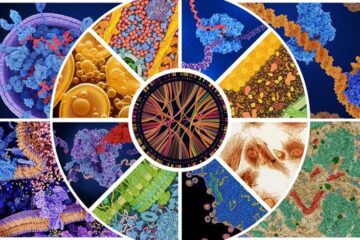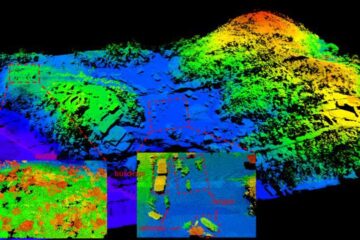Green Plants Share Bacterial Toxin

The lipid A in plant cells is evidently not toxic. The human intestine contains billions of Gram-negative bacteria, but lipid A does not become a problem unless bacteria invade the bloodstream.
“We've no idea what it's doing, but it must be something important because it's been retained for a billion years of evolution of plant chloroplasts,” said Peter Armstrong, professor of molecular and cellular biology at UC Davis and senior author on the paper.
Endotoxin is better known to bacteriologists and physicians as part of the outer coat of Gram-negative bacteria such as E. coli. The lipid A core of bacterial endotoxin activates the immune system and can cause septic shock, a major cause of death from infection. It is distinct from the toxin found in E. coli strain 0157, responsible for the recent outbreak of food poisoning tied to spinach.
Bacteria were thought to be the only source of lipid A. However, R.L. Pardy, professor at the University of Nebraska-Lincoln, recently found a similar molecule in Chlorella, a single-celled relative of more advanced plants. Armstrong's lab at UC Davis developed methods to visualize lipid A in cells, using a protein from the immune system of the horseshoe crab, and the researchers began collaborating.
“It was one of those celebratory moments, when I looked in the microscope and saw these gloriously stained algal cells,” Armstrong said, describing their first experiment. The group has now found lipid A in chloroplasts of garden pea plants as well as green algae, and Armstrong suspects that it is present in all higher plants with chloroplasts.
That idea is supported by genetics. Sequencing of the Arabidopsis genome — the first higher plant to have its entire DNA sequence read — revealed that the common lab plant has all the biochemical machinery to make lipid A, an observation that had gone largely unnoticed until now. Chloroplasts themselves are thought to have evolved from cyanobacteria, independent photosynthetic bacteria that took up residence in ancestral plant cells.
Other authors on the paper, in addition to Armstrong and Pardy, are postgraduate researcher Margaret Armstrong; Steven Theg, professor of plant biology, and graduate student Nikolai Braun at UC Davis; and Norman Wainwright at the Woods Hole Marine Biology Laboratory. The work was funded by the National Science Foundation and is published in the October 2006 issue of the FASEB Journal.
Media Contact
More Information:
http://www.ucdavis.eduAll latest news from the category: Life Sciences and Chemistry
Articles and reports from the Life Sciences and chemistry area deal with applied and basic research into modern biology, chemistry and human medicine.
Valuable information can be found on a range of life sciences fields including bacteriology, biochemistry, bionics, bioinformatics, biophysics, biotechnology, genetics, geobotany, human biology, marine biology, microbiology, molecular biology, cellular biology, zoology, bioinorganic chemistry, microchemistry and environmental chemistry.
Newest articles

A universal framework for spatial biology
SpatialData is a freely accessible tool to unify and integrate data from different omics technologies accounting for spatial information, which can provide holistic insights into health and disease. Biological processes…

How complex biological processes arise
A $20 million grant from the U.S. National Science Foundation (NSF) will support the establishment and operation of the National Synthesis Center for Emergence in the Molecular and Cellular Sciences (NCEMS) at…

Airborne single-photon lidar system achieves high-resolution 3D imaging
Compact, low-power system opens doors for photon-efficient drone and satellite-based environmental monitoring and mapping. Researchers have developed a compact and lightweight single-photon airborne lidar system that can acquire high-resolution 3D…





















